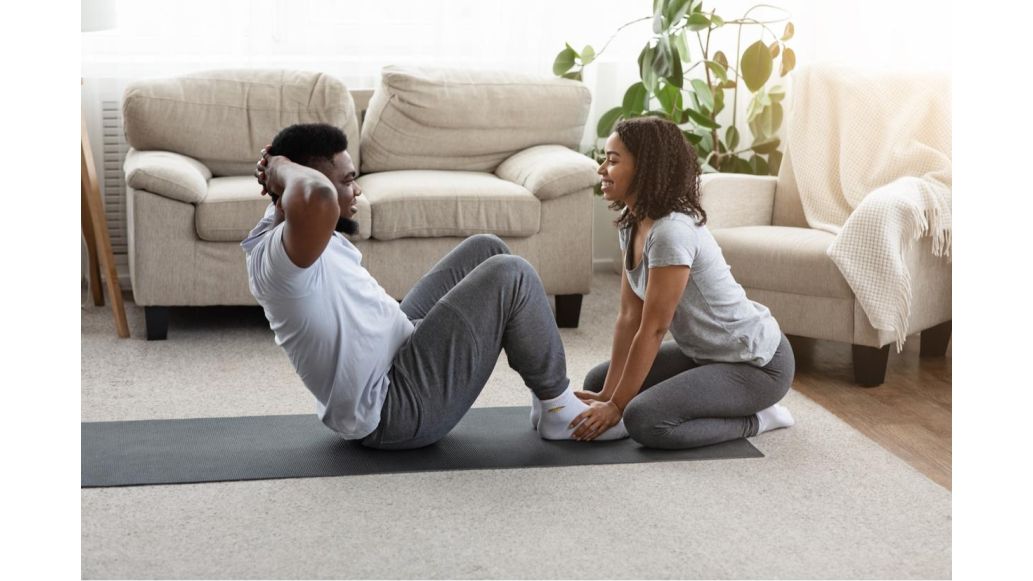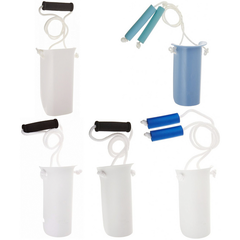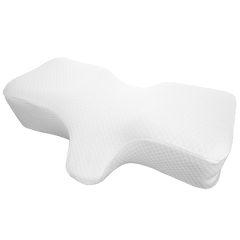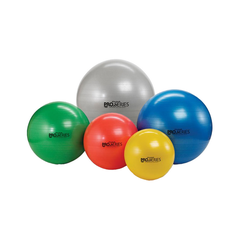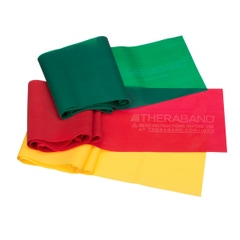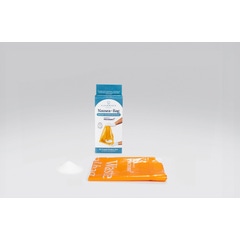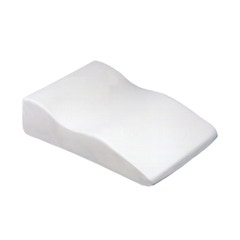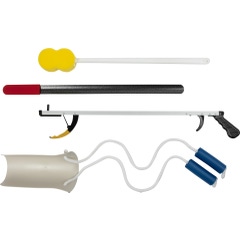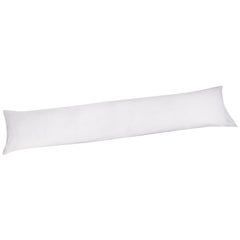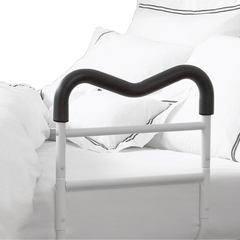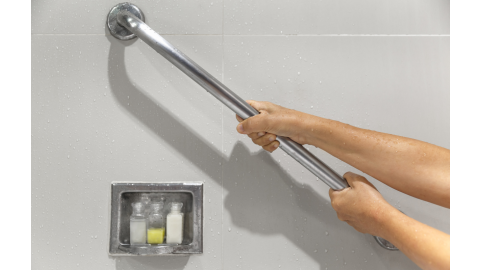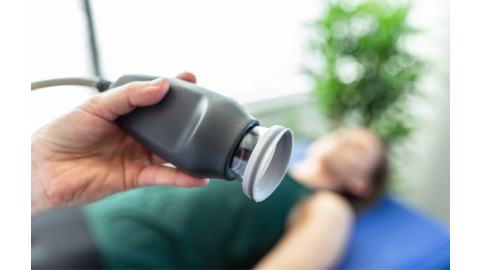Key Takeaways
- Whether you’ve had a cesarean section or an open hernia repair, the key to recovery is to go slow
- After surgery, an abdominal binder can offer your muscles support as they heal
- There are many ways to prepare prior to surgery to make recovery easier
- Abdominal exercises can help you regain muscle strength once your doctor gives you approval
Top Products in This Article
You might be feeling restless after abdominal surgery and ready to get back to activity, but it's important you heal first. Recovery from abdominal surgery requires you to slowly rebuild your stomach muscles. These muscles might have been cut to access the abdominal cavity during a hysterectomy, a cesarean section, or an open hernia repair.
Fortunately, we’ve come up with a few tips and 6 exercises that you can do at home to help heal abdominal muscles after surgery!
- Benefits of Post Abdominal Exercise
- What to Expect at Home
- 6 Post-Operative Abdominal Exercises
- When can I begin to exercise?
Benefits of Post Abdominal Exercise
Whether you have undergone a C-section, a hernia repair, or a hysterectomy, exercise can make a difference in your recovery. These procedures often weaken abdominal muscles and the pelvic floor, leading to pain, urinary incontinence, and digestive issues. Weakened abdominal muscles can result in poor posture and back pain as well.
If you suffer from muscle spasms following surgery, getting up and walking can alleviate muscle spasm pain. Controlled exercise does not damage your wound or surgical area, but can help improve your breathing, increase blood flow to your lungs, and aid in recovery of your bowel function. For additional support, abdominal binders provide moderate compression to the belly muscles as they are newly healing. The binders are designed to prevent post-surgery risks, restricting expansion of the chest and abdomen.
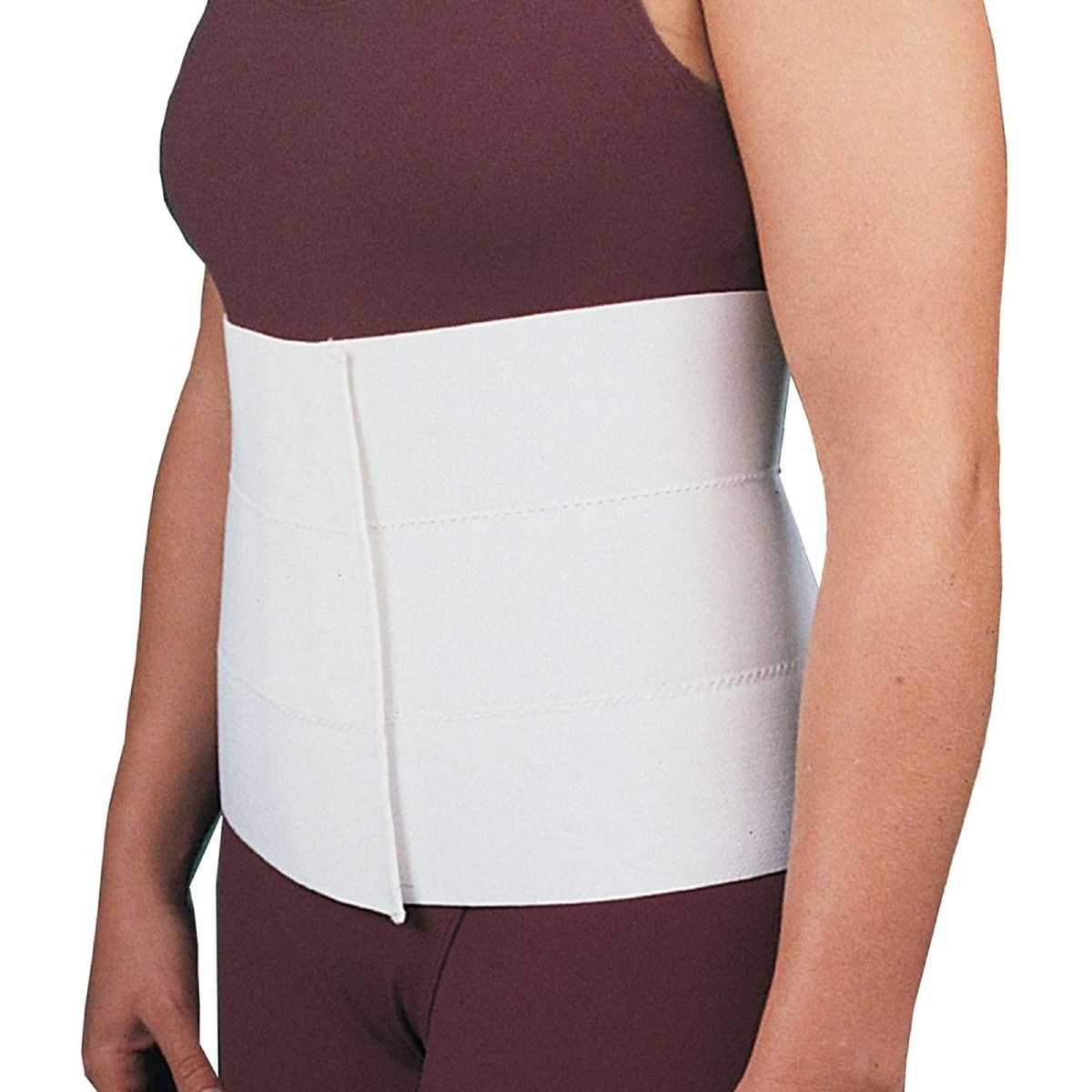
What to Expect at Home
Abdominal surgery is a physically-demanding experience that requires modifications at home to help you make a fast and full recovery. As with any surgery, recovery varies from person to person. Be sure to discuss with your doctor in advance the various scenarios you may expect after surgery. By knowing what to expect following surgery, you can plan and get back to your old routine as quickly as possible!

- Start Walking
Early walking after surgery is one of the most crucial things you can do to prevent problems after surgery. Try to walk each day. Walking helps boost blood flow and prevent blood clots. Start with 10-15 minutes and gradually add to your distance or to the length of time that you walk.
Failure to walk may cause increased pain and weakness, and puts you at a higher risk for infections, blood clots, and lung problems, such as pneumonia. Prolonged bed rest may also increase the risk for skin breakdown and pressure sores. Avoid strenuous activities such as biking, jogging, weightlifting, or aerobic exercise.

- Eat Healthy
After surgery, you may feel constipated or nauseous. Although you may not be hungry or want to eat, it is important to eat a healthy diet that promotes healing. Fiber and probiotics can help boost the immune system and keep your digestive tract moving along. It is also recommended to drink plenty of water and stay hydrated.

- Limit Movement
For 4 to 8 weeks after your surgery, or until your doctor tells you otherwise, do not lift, pull, or push anything that weighs more than 10 pounds. Do not perform any movement or exercises that use your abdominal muscles, such as sitting straight up from a lying position.
If it is hard for you to reach your feet while getting dressed, use a sock aid or long-handled shoehorn for putting on and taking off your socks, shoes, and pants. While limiting your movement, make sure to be mindful of your foot health. Try a long-handled foot sponge to maintain foot hygiene. Use a reacher to grab things off the floor or a lower spot. Purchase everything you need to get ready independently with a home or foot care kit.

- Get Plenty of Rest
Sleep is very important when healing after surgery. If you are having trouble sleeping, try using a body positioner or pillow. Keeping a pillow between your knees or under your stomach will help you sleep more comfortably after surgery. Place the body positioner under the back to support the spine as you on lie on your side, reducing pressure on the sacrum. If you’re trying a new sleeping position, a supportive head pillow can help too.
To reduce the risk of injury, make sure to use the logroll method to get out of bed. First, move your feet off the bed and roll onto your side with your knees bent. Then, move your feet off the bed by using your arms to push your body up to a sitting position. Sit on the side of the bed before you stand up. For additional help, use a grab rail attached to the bed.
6 Post-Operative Abdominal Exercises
These exercises focus on strengthening the abdomen and pelvic floor muscles. Strengthening the abdominal and pelvic muscles helps reduce the risk of complications such as abdominal weakness or low back pain. To prevent stiffness and pain, it is recommended you continue to do these exercises three times a day.
In addition to exercise, gently stretch your abdomen once your wounds have healed. This may help you regain your normal posture and prevent tight scarring. Progress from lying flat on your back to lying on your stomach and then to lying on your stomach propped up on your elbows.
Make sure to check with your doctor before beginning a new exercise program.
Pelvic Tilt
2-4 Weeks After Surgery
Lie on your back with your knees bent. Gently rock your pelvis upwards and flatten your back into the bed or floor
Note: You should feel your ab muscles tighten a little
Rock back to your starting position and repeat. Aim for 5 repetitions, 2-3 times a day in the first few weeks following surgery
As you progress, allow your back to arch up a little more and tighten your abs more strongly as you push your back into the floor. Build up towards 20 repetitions.
Variation: Lie on your back with your knees bent. Gently rock your pelvis upwards and flatten your back into the bed or floor. While taking deep breaths, hold this position for 15-30 seconds.
Heel Slides
2-4 Weeks After Surgery
Lie down on the floor or the bed with your legs flat. Slowly begin to slide one heel toward your butt, keeping your heel on the floor or the bed. Your knee will begin to bend
Note: Continue to slide your heel and bend your knee until it becomes a little uncomfortable and you can feel a small amount of pressure inside your knee
Hold this position for about 5 seconds. Slide your heel back down until your leg is straight on the floor or bed. Aim for 5 repetitions before switching to the opposite side
Knee Roll
2-4 Weeks After Surgery
Lie on your back with your knees bent and arms out to the sides. Keep your knees and ankles together and slowly let your knees begin to drop over to one side
Carefully tighten your ab muscles and roll your knees over to the other side. Try to keep your shoulders down and your head relaxed, looking up with your eyes.
Aim for 5 repetitions, 2-3 times a day in the first few weeks following surgery. As time goes on, you can increase the range, so your knees drop lower and build up to 20 repetitions
Hip Lift
6-8 Weeks After Surgery
Lie on your back with your knees bent. Very gently tilt your pelvis backwards and tighten your pelvic floor muscles
Lift your butt off the bed or the floor and slowly lift up, vertebrae by vertebrae. Lift your butt as high as you comfortably can
Hold this position for 5-10 seconds, taking deep breaths. Slowly lower your spine and pelvis back down
Aim for 3-5 repetitions initially, building up to 10-15 repetitions in time and lifting higher as you continue to progress in your recovery
Abdominal Hollowing
6-8 Weeks After Surgery
Kneel on all fours on the bed or the floor, keeping your back straight
Inhale, gently tightening the muscles in the lower part of your abdomen without arching your back. Hold this position for 5 seconds and exhale slowly to relax the muscles
Abdominal Curl-Ups
6-8 Weeks After Surgery
Lie on your back with your knees bent and both feet planted on the floor or the bed. Keeping your knees together, place your hand on each thigh
Lift your head and shoulders off the floor by sliding your hands along your thighs towards your knees. Once you’ve reached a comfortable spot, hold this position for 3-5 seconds
Slowly lower your head and shoulders back to the floor. Aim for 5 repetitions initially, building up to 10-15 repetitions in time and extending farther as you continue to progress in your recovery
When Can I Begin to Exercise?
It is important to rest for the first 2 weeks at home, but you do not need to stay in bed. After the first few days following post-abdominal surgery, you can begin to build your strength and stamina by going for short walks each day. Your abdomen muscles will gradually strengthen over this period and then you can begin implementing floor exercises into your daily routine.
Ask your doctor when you can begin more strenuous exercises with an exercise ball or resistance bands to further strengthen your abs. This is often after 4-8 weeks. Do crunches while reclining on an exercise ball or perform leg lifts. Or simply hold a resistance band wrapped around the arches of your feet to isolate and tone the muscles below your waistline. Consecutive loops allow you to place the loop at the arch of the foot for more stability and support throughout the exercise, which comes with a library of videos to help you use them effectively.
Exercise and build your abdominal muscles with strength training, but only when your doctor says it is safe to do so. This can include performing sit-ups, bicycles, and flutter kicks while lying on the floor. Be sure to keep your lower back flat against the ground to maintain proper form.
References
- Tresca, Amber. (2020). How to Strengthen Your Abdominal Muscles After Surgery. VeryWell Health. Retrieved from https://bit.ly/3jIYD5u
- McMillan, Alissa. (2020). 7 Abdominal Surgery Preparation and Recovery Tips. Evansville Surgical Associates. Retrieved from https://bit.ly/34IR7Dq
Medical Disclaimer: The information provided on this site, including text, graphics, images and other material, are for informational purposes only and are not intended to substitute for professional medical advice, diagnosis or treatment. Always seek the advice of your physician or other healthcare professional with any questions or concerns you may have regarding your condition.








 France
France Australia
Australia